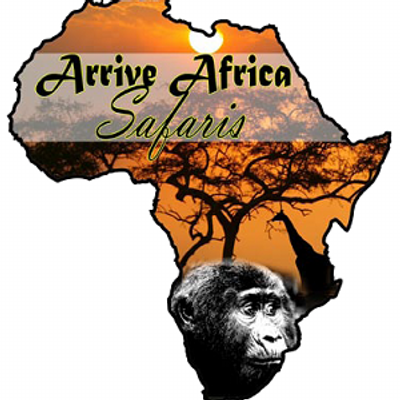An Overview of Uganda's Mountain Gorilla Population and Their Family Structures
Uganda is home to two species of gorillas: the mountain gorilla and the eastern lowland gorilla. The mountain gorilla is a critically endangered species and only found in the wild in the Virunga Mountains, which straddle Uganda, Rwanda, and the Democratic Republic of Congo, while the eastern lowland gorilla is found in the eastern region of Uganda.
The mountain gorilla population in Uganda is divided into ten families, also known as groups or troops. These families are:
Each gorilla family has its unique characteristics, dynamics and personalities. The family composition, behavior and interactions vary, making each gorilla trekking experience in Uganda unique and exciting. It is important to note that while gorilla trekking is a fantastic experience, it is essential to respect the gorillas and their habitat to ensure their conservation and protection
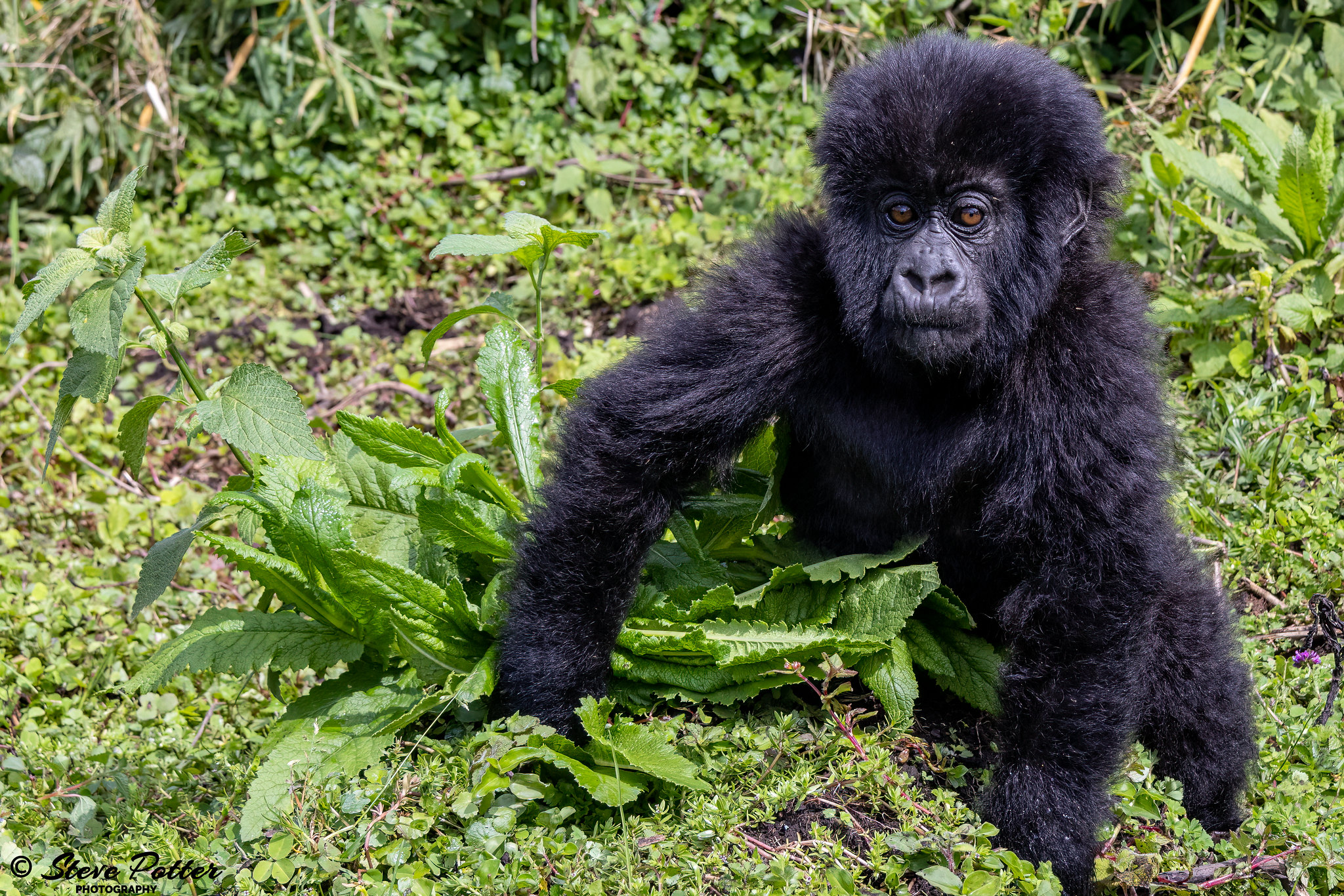
Mubare is one of the ten gorilla families that can be found in Uganda’s Bwindi Impenetrable National Park. This family was the first to be habituated in Uganda, meaning that they are accustomed to human presence, making it possible for visitors to go on gorilla trekking tours to see them. Mubare is led by a dominant silverback known as Kanyonyi, who took over leadership of the group in 2012 following the death of the previous leader. Kanyonyi is a large and imposing figure, weighing over 200 kg, and is well-known for his gentle nature and love for his family.
The Mubare family consists of 9 members, including Kanyonyi, 3 adult females, 1 juvenile, and 4 infants. The adult females in the group are named Malaika, Nyakagezi, and Bitera. Malaika is the mother of the juvenile, while Nyakagezi is the only female in the group who has not yet given birth.
The Mubare family is known for its relatively calm and gentle nature, which makes them a favorite among gorilla trekking enthusiasts. Visitors who go on a trekking tour to see the Mubare family are often struck by the way the gorillas seem to accept their presence and go about their business as if they were not there.
Aside from gorilla trekking, visitors can also learn more about the Mubare family and the other gorilla families in the park at the Bwindi Impenetrable National Park Visitor Center. Here, they can view exhibits and learn about the conservation efforts being made to protect these amazing animals and their habitat.
In conclusion, the Mubare family is an important part of the gorilla population in Uganda’s Bwindi Impenetrable National Park. With their gentle nature and fascinating behavior, they are a popular choice for visitors who want to experience the wonder of seeing gorillas in their natural habitat.
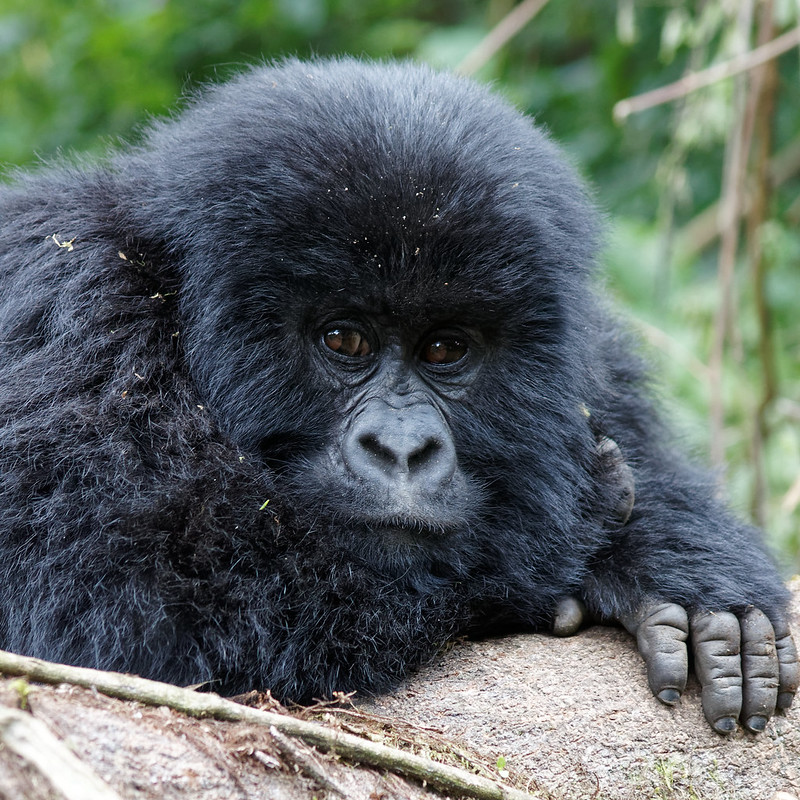
Habinyanja is one of the ten habituated gorilla families in Uganda and is found in the Bwindi Impenetrable National Park. The family was named after the swampy area where it was first sighted, which means “a place of body water” in the local language.
The Habinyanja family has 18 members, including two silverbacks, five adult females, two sub-adults, two juveniles, and seven infants. The dominant silverback is called “Mwirima,” who has been leading the group since its formation in 1997. The second silverback is called “Mugurisi,” who is subordinate to Mwirima but still plays an important role in the group’s dynamics.
The family is known for its playful juveniles and the gentle nature of its silverbacks, which makes them easy to observe during gorilla trekking safaris. The group is also characterized by its close-knit relationships, with members often seen grooming each other and the infants playing together under the watchful eyes of the adults.
Habinyanja family’s home range covers an area of approximately 33 square kilometers, which they share with other gorilla groups in the park. The group’s diet consists mainly of leaves, stems, fruits, and flowers, which they forage for throughout the day.
Gorilla trekking is the primary activity that tourists can engage in to observe the Habinyanja family in their natural habitat. The experience of coming face to face with these majestic creatures in the dense forests of Bwindi is an awe-inspiring adventure that creates unforgettable memories.
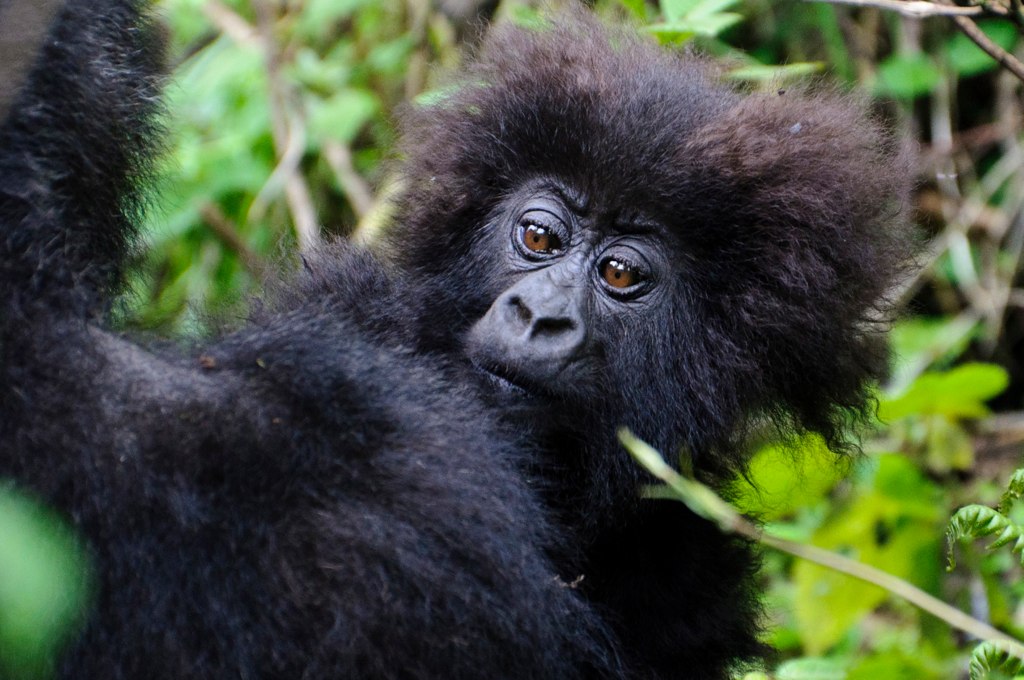
Rushegura is one of the ten habituated gorilla families found in Uganda’s Bwindi Impenetrable National Park. The family was formed in 2002 when a group of gorillas split from the Habinyanja family, forming an independent group. The name “Rushegura” means “a group that is always on the move” in the local language.
The Rushegura family has 19 members, including one silverback, five adult females, two sub-adults, five juveniles, and six infants. The dominant silverback is called “Kibwota,” who took over leadership of the family in 2013 after the death of the previous dominant silverback. Kibwota is a calm and gentle leader, and the group’s dynamics are relatively peaceful and harmonious.
The Rushegura family is known for its playful juveniles, and visitors often observe them playing and climbing trees under the watchful eyes of the adults. The family is also known for its tolerance towards other gorilla groups, often peacefully sharing their territory and resources.
The family’s home range covers an area of approximately 10 square kilometers, which they share with other gorilla groups in the park. The family’s diet consists mainly of leaves, stems, fruits, and flowers, which they forage for throughout the day.
Gorilla trekking is the primary activity that tourists can engage in to observe the Rushegura family in their natural habitat. The experience of coming face to face with these magnificent creatures in the dense forests of Bwindi is an unforgettable adventure that leaves visitors with a newfound appreciation for wildlife conservation efforts.
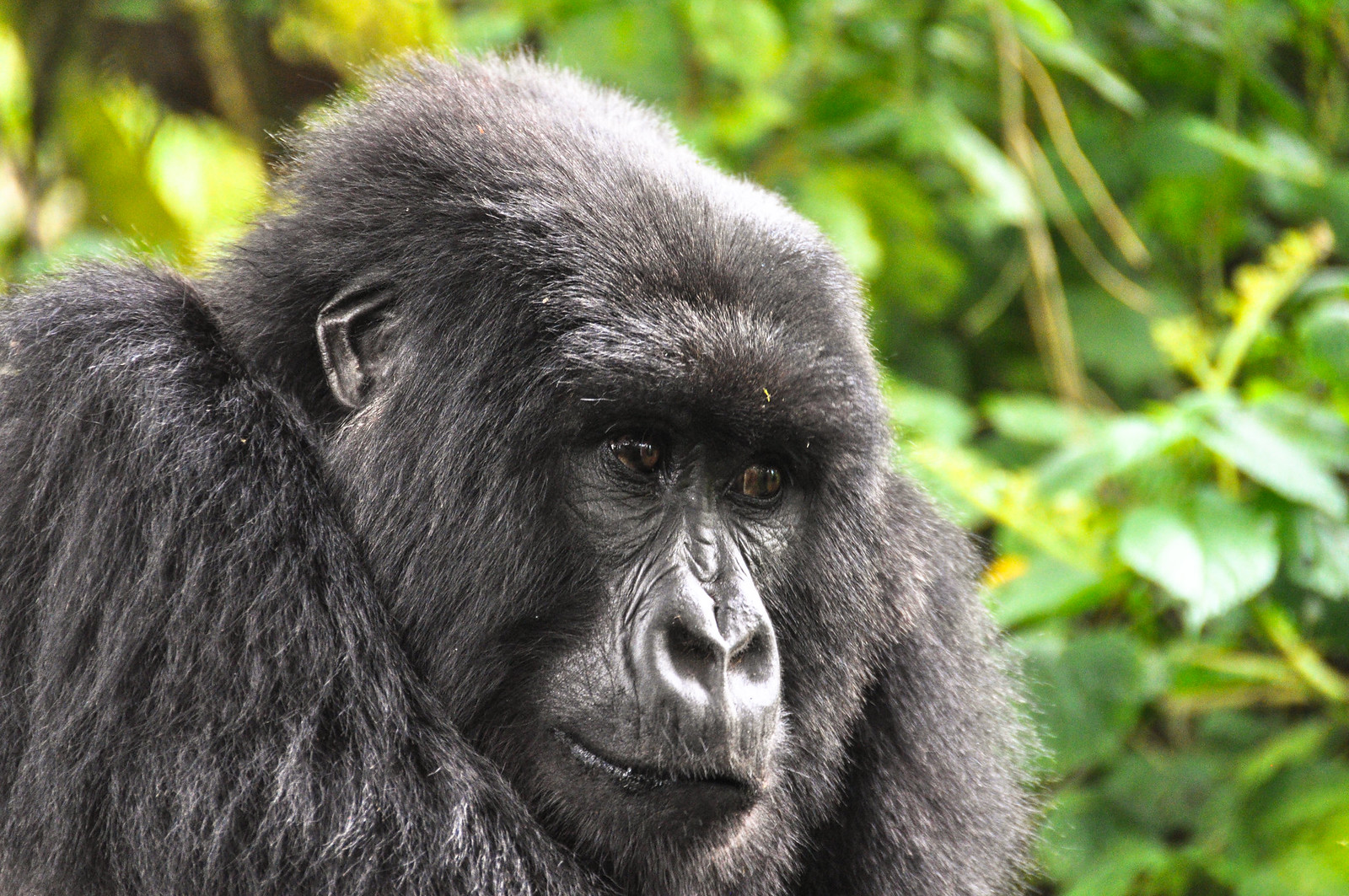
Nkuringo is a family of gorillas that lives in the dense forests of Bwindi Impenetrable National Park, located in southwestern Uganda. This family is named after the area in which they were first identified and habituated by researchers in 2004.
The Nkuringo family is made up of approximately 19 members, including one silverback, six adult females, four juveniles, and eight infants. The silverback, Nkuringo, is the dominant male of the group and is known for his impressive size and strength. He is a gentle and protective leader, who takes great care of his family members and ensures their safety.
The Nkuringo family is one of the most popular groups of gorillas to visit for tourists who come to the park to go gorilla trekking. Visitors who are lucky enough to encounter the family are often struck by the beauty and majesty of these intelligent and powerful creatures. The family is known for their calm and relaxed behavior, which makes them very easy to observe and photograph.
Like other gorilla families in the park, the Nkuringo family faces threats from habitat loss, poaching, and disease. However, the Ugandan government and conservation organizations are working hard to protect these magnificent animals and their habitat. The Bwindi Impenetrable National Park is a protected area, and strict regulations are in place to ensure that gorilla trekking is done in a sustainable and responsible manner.
In conclusion, the Nkuringo family of gorillas is a fascinating and important part of the natural world. They are a symbol of the beauty and diversity of life on our planet and a reminder of the importance of conservation efforts to protect endangered species.
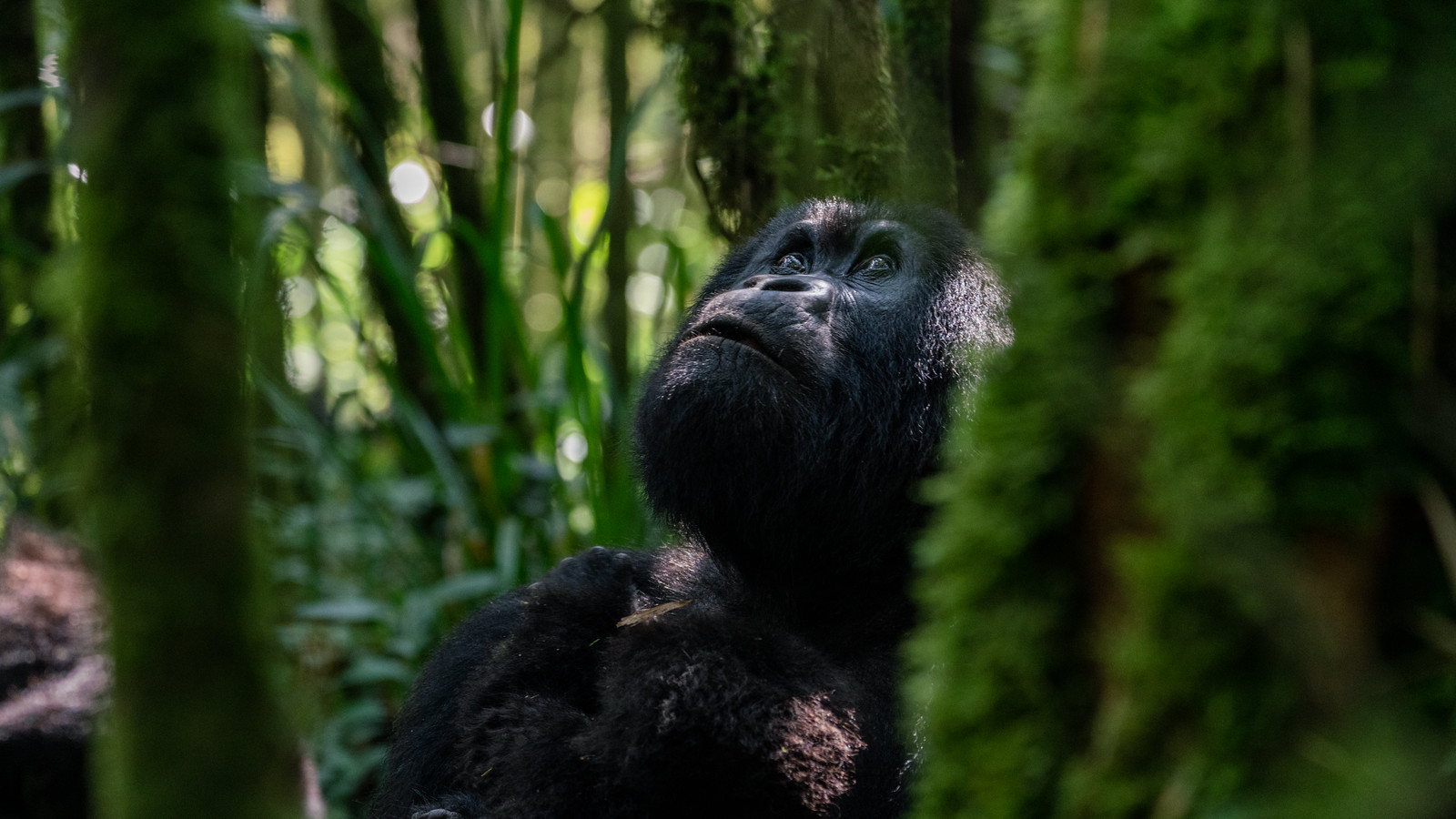
Kahungye is a family of gorillas that lives in the dense forests of Bwindi Impenetrable National Park, located in southwestern Uganda. The family was first identified and habituated by researchers in 2009 and is named after the Kahungye hill, where they were first found.
The Kahungye family is made up of approximately 13 members, including one dominant silverback, five adult females, two juveniles, and five infants. The silverback, Rumanzi, is a strong and powerful leader who is known for his protective nature towards his family. Rumanzi takes great care of his family members, and his leadership has helped the family thrive in their natural habitat.
The Kahungye family is known for their calm and relaxed behavior, making them a popular group to visit for tourists who come to the park for gorilla trekking. Visitors are often impressed by the beauty and intelligence of these magnificent creatures, and the experience of watching them in their natural habitat can be a truly unforgettable one.
Like other gorilla families in the park, the Kahungye family faces threats from habitat loss, poaching, and disease. However, the Ugandan government and conservation organizations are working hard to protect these animals and their habitat. The Bwindi Impenetrable National Park is a protected area, and strict regulations are in place to ensure that gorilla trekking is done in a sustainable and responsible manner.
In conclusion, the Kahungye family of gorillas is an important part of the natural world, and their protection is vital for the survival of the species. Gorilla trekking provides a unique opportunity for visitors to see these magnificent animals in their natural habitat while supporting conservation efforts.

Oruzogo is a family of gorillas that lives in the dense forests of Bwindi Impenetrable National Park, located in southwestern Uganda. The family was first identified and habituated by researchers in 2011 and is named after the Oruzogo valley, where they were first found.
The Oruzogo family is made up of approximately 22 members, including one dominant silverback, six adult females, two juveniles, and 13 infants. The silverback, Tibirikwata, is a strong and protective leader who is known for his calm and gentle nature. He takes great care of his family members and is always vigilant in protecting them from any potential threats.
The Oruzogo family is known for their playful and curious behavior, making them a popular group to visit for tourists who come to the park for gorilla trekking. Visitors are often amazed by the interactions between family members, including the playful behavior of the juveniles and infants. The experience of watching these magnificent creatures in their natural habitat can be truly awe-inspiring.
Like other gorilla families in the park, the Oruzogo family faces threats from habitat loss, poaching, and disease. However, the Ugandan government and conservation organizations are working hard to protect these animals and their habitat. The Bwindi Impenetrable National Park is a protected area, and strict regulations are in place to ensure that gorilla trekking is done in a sustainable and responsible manner.
In conclusion, the Oruzogo family of gorillas is an important part of the natural world, and their protection is vital for the survival of the species. Gorilla trekking provides a unique opportunity for visitors to see these magnificent animals in their natural habitat while supporting conservation efforts.
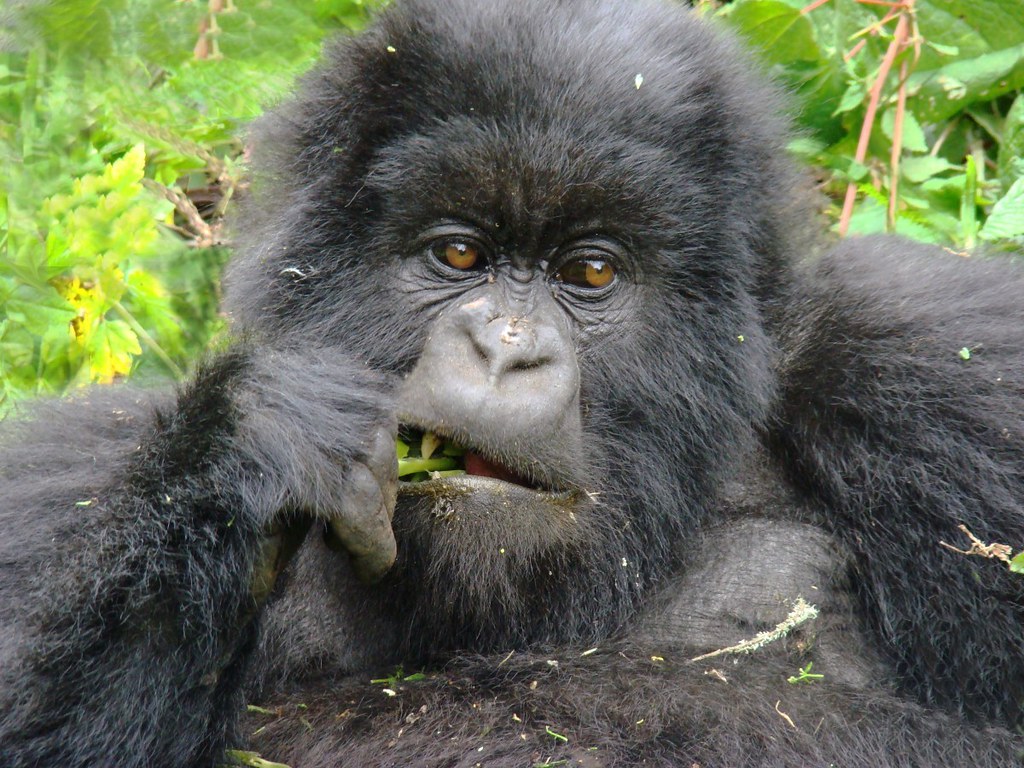
Bitukura is a family of gorillas that lives in the dense forests of Bwindi Impenetrable National Park, located in southwestern Uganda. The family was first identified and habituated by researchers in 2007 and is named after the Bitukura hill, where they were first found.
The Bitukura family is made up of approximately 14 members, including one dominant silverback, four adult females, two juveniles, and seven infants. The silverback, Ndahura, is a strong and protective leader who is known for his calm and confident nature. He takes great care of his family members and is always vigilant in protecting them from any potential threats.
The Bitukura family is known for their calm and relaxed behavior, making them a popular group to visit for tourists who come to the park for gorilla trekking. Visitors are often impressed by the beauty and intelligence of these magnificent creatures, and the experience of watching them in their natural habitat can be a truly unforgettable one.
Like other gorilla families in the park, the Bitukura family faces threats from habitat loss, poaching, and disease. However, the Ugandan government and conservation organizations are working hard to protect these animals and their habitat. The Bwindi Impenetrable National Park is a protected area, and strict regulations are in place to ensure that gorilla trekking is done in a sustainable and responsible manner.
In conclusion, the Bitukura family of gorillas is an important part of the natural world, and their protection is vital for the survival of the species. Gorilla trekking provides a unique opportunity for visitors to see these magnificent animals in their natural habitat while supporting conservation efforts.
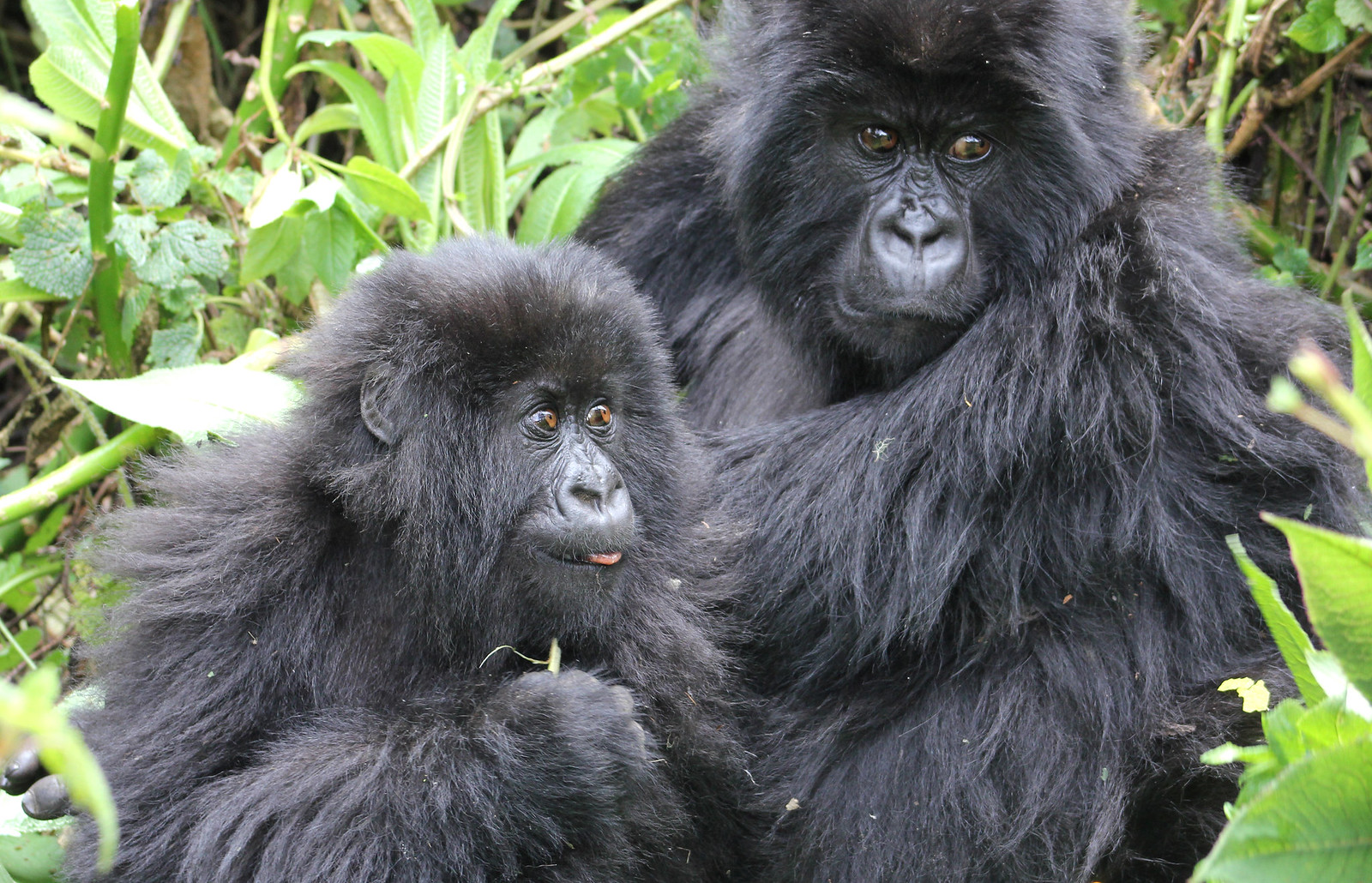
Mishaya is a family of gorillas that lives in the dense forests of Bwindi Impenetrable National Park, located in southwestern Uganda. The family was first identified and habituated by researchers in 2010 and is named after the Mishaya hill, where they were first found.
The Mishaya family is made up of approximately 12 members, including one dominant silverback, three adult females, two juveniles, and six infants. The silverback, Mishaya, is a strong and protective leader who is known for his assertive and dominant personality. He takes great care of his family members and is always vigilant in protecting them from any potential threats.
The Mishaya family is known for their energetic and active behavior, making them a popular group to visit for tourists who come to the park for gorilla trekking. Visitors are often amazed by the interactions between family members, including the playful behavior of the juveniles and infants. The experience of watching these magnificent creatures in their natural habitat can be truly awe-inspiring.
Like other gorilla families in the park, the Mishaya family faces threats from habitat loss, poaching, and disease. However, the Ugandan government and conservation organizations are working hard to protect these animals and their habitat. The Bwindi Impenetrable National Park is a protected area, and strict regulations are in place to ensure that gorilla trekking is done in a sustainable and responsible manner.
In conclusion, the Mishaya family of gorillas is an important part of the natural world, and their protection is vital for the survival of the species. Gorilla trekking provides a unique opportunity for visitors to see these magnificent animals in their natural habitat while supporting conservation efforts.

Nshongi is a family of gorillas that lives in the dense forests of Bwindi Impenetrable National Park, located in southwestern Uganda. The family was first identified and habituated by researchers in 2009 and is named after the Nshongi river, where they were first found.
The Nshongi family is made up of approximately 25 members, including one dominant silverback, eight adult females, two blackbacks, and 14 infants. The silverback, Nshongi, is a strong and protective leader who is known for his calm and gentle nature. He takes great care of his family members and is always vigilant in protecting them from any potential threats.
The Nshongi family is one of the largest gorilla families in the park, and their size can make for an impressive sight for tourists who come to the park for gorilla trekking. Visitors are often amazed by the interactions between family members, including the playful behavior of the juveniles and infants. The experience of watching these magnificent creatures in their natural habitat can be truly awe-inspiring.
Like other gorilla families in the park, the Nshongi family faces threats from habitat loss, poaching, and disease. However, the Ugandan government and conservation organizations are working hard to protect these animals and their habitat. The Bwindi Impenetrable National Park is a protected area, and strict regulations are in place to ensure that gorilla trekking is done in a sustainable and responsible manner.
In conclusion, the Nshongi family of gorillas is an important part of the natural world, and their protection is vital for the survival of the species. Gorilla trekking provides a unique opportunity for visitors to see these magnificent animals in their natural habitat while supporting conservation efforts.
 Nyakagezi is a family of gorillas that lives in the dense forests of Mgahinga Gorilla National Park, located in southwestern Uganda. The family was first identified and habituated by researchers in the 1990s and is named after the Nyakagezi mountain where they frequently roam.
Nyakagezi is a family of gorillas that lives in the dense forests of Mgahinga Gorilla National Park, located in southwestern Uganda. The family was first identified and habituated by researchers in the 1990s and is named after the Nyakagezi mountain where they frequently roam.
The Nyakagezi family is made up of approximately 10 members, including one dominant silverback, three adult females, two juveniles, and four infants. The silverback, Mark, is a strong and protective leader who is known for his calm and gentle nature. He takes great care of his family members and is always vigilant in protecting them from any potential threats.
The Nyakagezi family is unique in that it is a migratory family, frequently crossing over the border into neighboring Rwanda and the Democratic Republic of Congo. Their migratory behavior is believed to be influenced by the availability of food sources, as well as the movements of other gorilla families in the region.
Due to their migratory behavior, the Nyakagezi family can be more difficult to track and locate for gorilla trekking. However, visitors who do have the opportunity to see them are often rewarded with a unique and unforgettable experience.
Like other gorilla families in the region, the Nyakagezi family faces threats from habitat loss, poaching, and disease. However, the Ugandan government and conservation organizations are working hard to protect these animals and their habitat. Mgahinga Gorilla National Park is a protected area, and strict regulations are in place to ensure that gorilla trekking is done in a sustainable and responsible manner.
In conclusion, the Nyakagezi family of gorillas is a unique and important part of the natural world, and their protection is vital for the survival of the species. Gorilla trekking provides a rare opportunity for visitors to see these magnificent animals in their natural habitat while supporting conservation efforts.

Busingye is a family of gorillas that lives in the dense forests of Volcanoes National Park, located in northern Rwanda. The family was first identified and habituated by researchers in 2007 and is named after the dominant silverback, Busingye, which means “peaceful” in the local language.
The Busingye family is made up of approximately 9 members, including one dominant silverback, three adult females, two juveniles, and three infants. Busingye is a gentle and protective leader who is known for his calm and composed nature. He takes great care of his family members and is always on the lookout for any potential threats.
The Busingye family is one of the smaller gorilla families in the park, but their size can make for a more intimate and personalized gorilla trekking experience. Visitors are often amazed by the unique interactions between family members, including the playful behavior of the juveniles and infants.
Like other gorilla families in the park, the Busingye family faces threats from habitat loss, poaching, and disease. However, the Rwandan government and conservation organizations are working hard to protect these animals and their habitat. Volcanoes National Park is a protected area, and strict regulations are in place to ensure that gorilla trekking is done in a sustainable and responsible manner.
In addition to gorilla trekking, visitors to Volcanoes National Park can learn more about gorilla conservation efforts at the nearby Karisoke Research Center, which was founded by the late Dian Fossey. The center provides valuable research and education on gorilla behavior, ecology, and conservation.
In conclusion, the Busingye family of gorillas is a unique and important part of the natural world, and their protection is vital for the survival of the species. Gorilla trekking provides a rare opportunity for visitors to see these magnificent animals in their natural habitat while supporting conservation efforts.
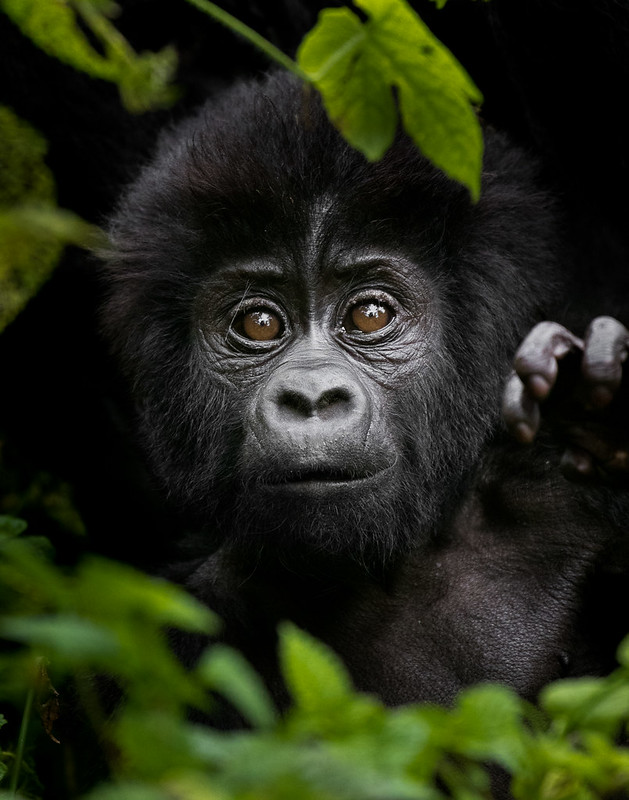
Bweza is a family of gorillas that lives in the Bwindi Impenetrable Forest National Park, located in southwestern Uganda. The family was first identified and habituated by researchers in 2009, and it is named after the dominant silverback, Bweza.
The Bweza family is made up of approximately 10 members, including one dominant silverback, three adult females, and six infants. Bweza is a protective leader who is known for his calm and patient nature. He takes great care of his family members and is always on the lookout for any potential threats.
The Bweza family is one of the smaller gorilla families in the park, but their size can make for a more intimate and personalized gorilla trekking experience. Visitors are often amazed by the unique interactions between family members, including the playful behavior of the infants.
Like other gorilla families in the park, the Bweza family faces threats from habitat loss, poaching, and disease. However, the Ugandan government and conservation organizations are working hard to protect these animals and their habitat. Bwindi Impenetrable Forest National Park is a protected area, and strict regulations are in place to ensure that gorilla trekking is done in a sustainable and responsible manner.
In addition to gorilla trekking, visitors to Bwindi Impenetrable Forest National Park can learn more about gorilla conservation efforts at the nearby Bwindi Community Hospital. The hospital provides valuable research and education on gorilla behavior, ecology, and conservation.
In conclusion, the Bweza family of gorillas is a unique and important part of the natural world, and their protection is vital for the survival of the species. Gorilla trekking provides a rare opportunity for visitors to see these magnificent animals in their natural habitat while supporting conservation efforts.
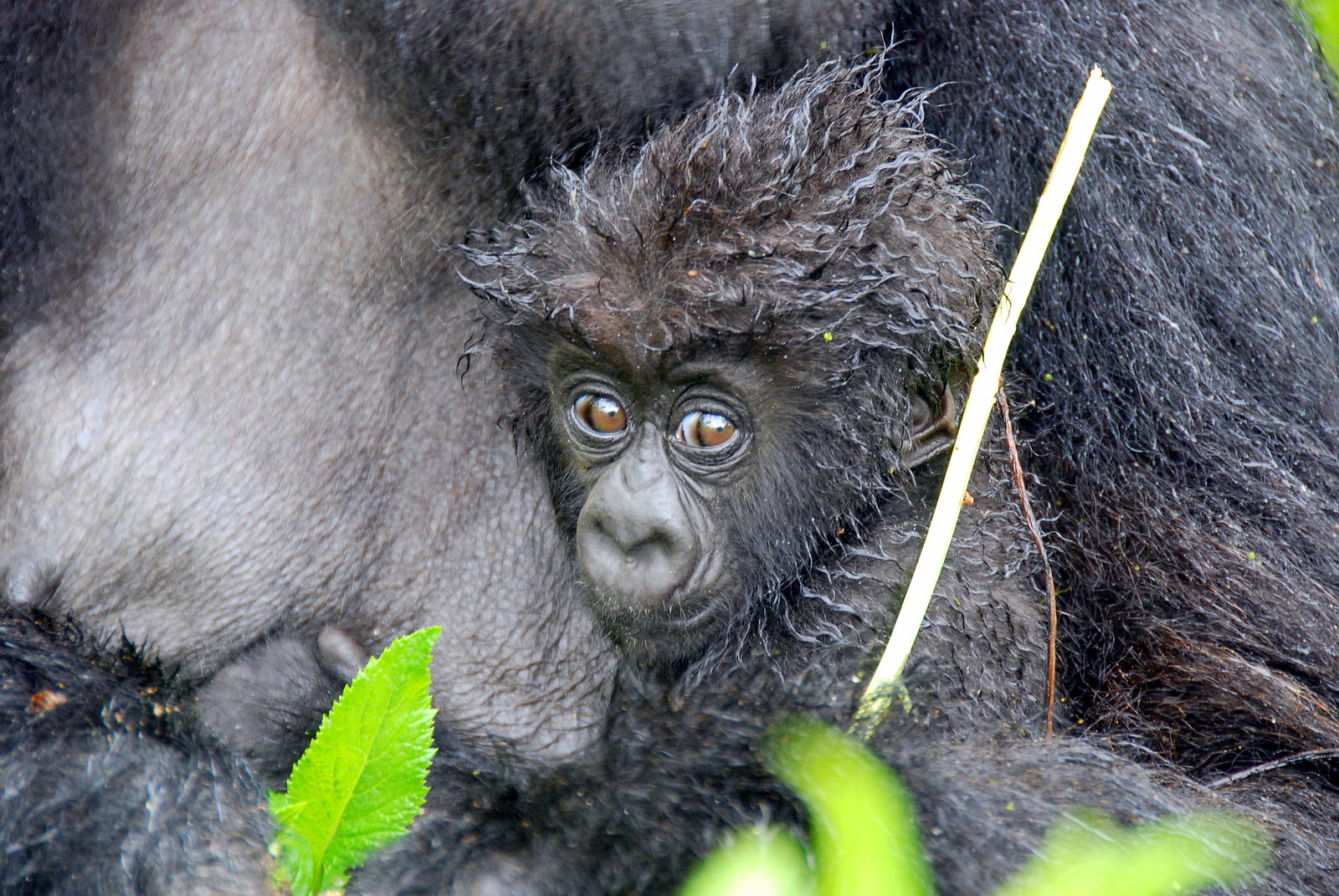
Kyaguriro is a family of gorillas that lives in the Bwindi Impenetrable Forest National Park, located in southwestern Uganda. The family was first identified and habituated by researchers in 1999, and it is named after the dominant silverback, Kyaguriro.
The Kyaguriro family is made up of approximately 16 members, including one dominant silverback, five adult females, two sub-adult females, four juveniles, and four infants. Kyaguriro is a protective leader who is known for his gentle nature. He takes great care of his family members and is always on the lookout for any potential threats.
The Kyaguriro family is one of the larger gorilla families in the park, and their size can make for a more exciting and dynamic gorilla trekking experience. Visitors are often amazed by the unique interactions between family members, including the playful behavior of the juveniles and infants.
Like other gorilla families in the park, the Kyaguriro family faces threats from habitat loss, poaching, and disease. However, the Ugandan government and conservation organizations are working hard to protect these animals and their habitat. Bwindi Impenetrable Forest National Park is a protected area, and strict regulations are in place to ensure that gorilla trekking is done in a sustainable and responsible manner.
In addition to gorilla trekking, visitors to Bwindi Impenetrable Forest National Park can learn more about gorilla conservation efforts at the nearby Bwindi Community Hospital. The hospital provides valuable research and education on gorilla behavior, ecology, and conservation.
In conclusion, the Kyaguriro family of gorillas is a unique and important part of the natural world, and their protection is vital for the survival of the species. Gorilla trekking provides a rare opportunity for visitors to see these magnificent animals in their natural habitat while supporting conservation efforts.
